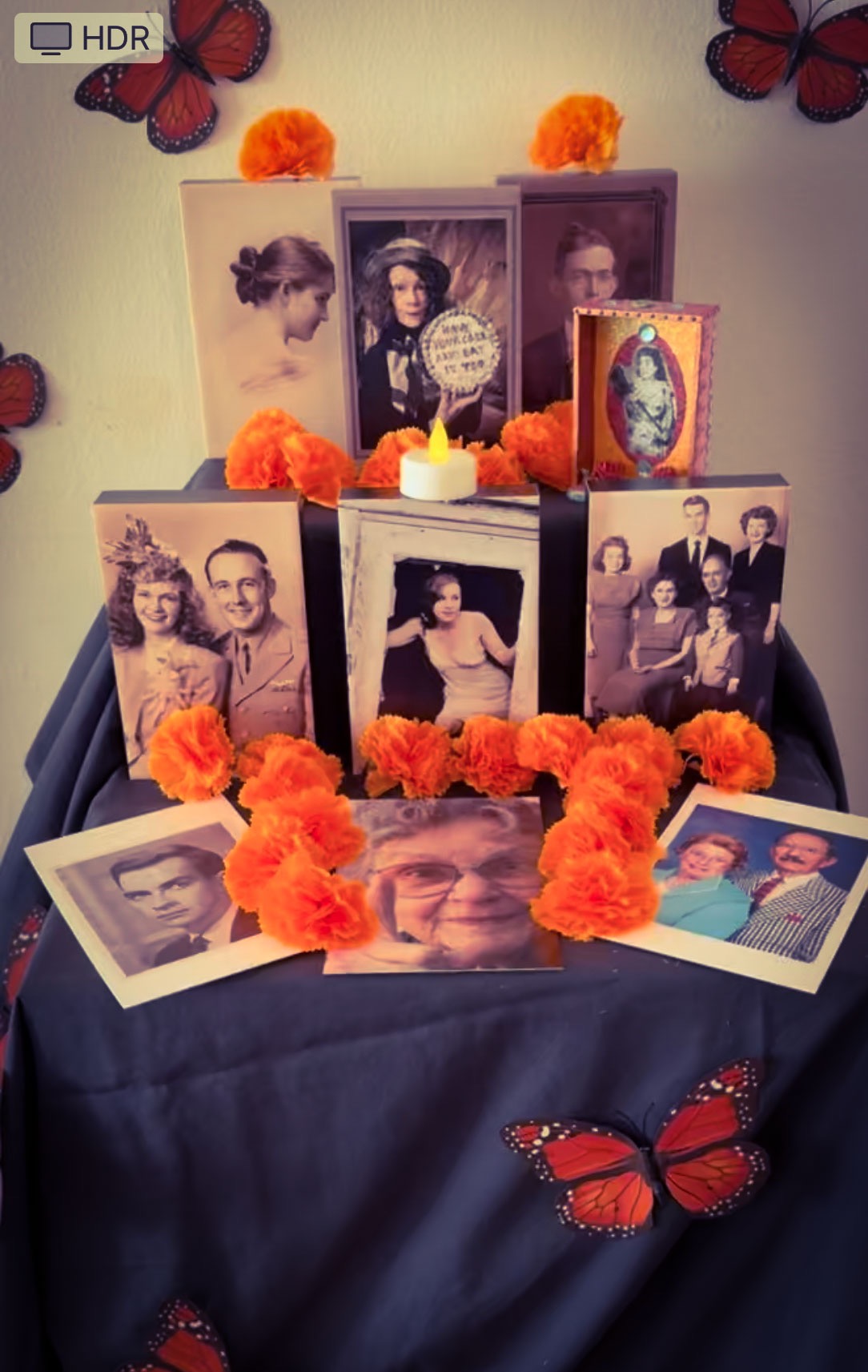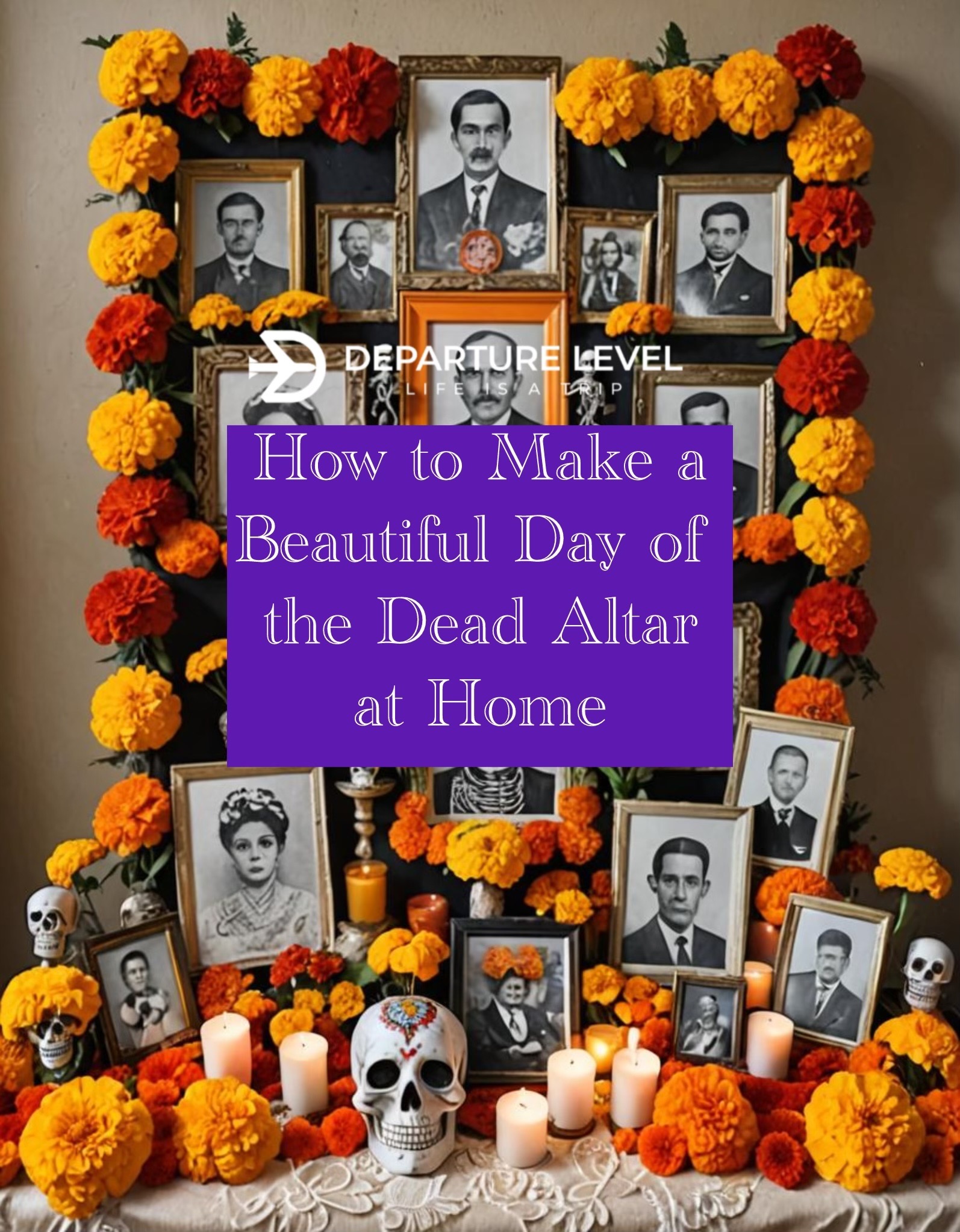
How to Make a Beautiful Day of the Dead Altar at Home: A Step-by-Step Guide

I’ve admired countless Día de los Muertos (Day of the Dead) altars in Mexico, but this year, I decided to actually make one myself, for the first time. It’s given me an even deeper appreciation of this cherished tradition — and you don’t have to be Mexican to feel the warmth of remembering and honoring your loved ones. But how do you make a Dia de los Muertos altar at home?
Día de los Muertos (Day of the Dead) has its roots in both indigenous and Spanish influences; it’s a way to celebrate the lives of loved ones who have passed on. Far from being a solemn occasion, the Day of the Dead is lively, colorful and full of joy, a celebration that’s as much about life as it is about death.
I’ve created a video to showcase my family altar,, but there are lots of ways to create and personalize your own. Here are some tips on how to build an authentic ofrenda (altar) that brings this Mexican tradition to your home, complete with history, significance and a step-by-step guide to setting it up.
I also explore issues of grief, loss and remembrance in my book, Prepare for Departure: Notes on a Single Mother, a Misfit Son, Inevitable Mortality and the Enduring Allure of Frequent Flyer Miles — so building this ofrenda provided yet another way for me to keep memories of my family alive.
What is the Day of the Dead?
Day of the Dead is celebrated on November 1 and 2, coinciding with All Saints’ Day and All Souls’ Day in the Catholic calendar, though its roots reach back much further. Pre-Hispanic civilizations honored the deceased through festivities that reflected a belief in an afterlife where spirits would return to visit. With Spanish colonization, Catholic elements were woven into these celebrations, and the result is today’s vibrant Día de los Muertos — a unique, cultural fusion where families remember the dead with humor, affection and festivity.
The belief is that during Day of the Dead, spirits return to visit their loved ones. They are not mourned; instead, their lives are celebrated. Altars (or ofrendas) are set up in homes to welcome these spirits with offerings of their favorite foods, drinks and cherished items. Every element on the altar has symbolic significance and is designed to invite spirits and a foster a deep sense of connection across generations.
What You Need to Create a Day of the Dead Altar at Home
An authentic altar is multi-layered, colorful and thoughtfully adorned with various items that have symbolic importance. You don’t necessarily have to include everything, of course — my ofrenda altar, for example, is a simplified version that doesn't include all the elements below. What matters is that it means something to you and your family.
If you find it too overwhelming to assemble all the items independently, you can also buy reasonably priced Dia de los Muertos kits online that include a variety of the most popular items.
Here’s a list of the main elements:
1. Photos of Loved Ones: Place framed photos of the people you’re honoring. This personal touch brings their memory into the celebration. I chose a few of my favorite photos of my family members and had some mounted in an attractive wood-box format using an online service.
2. Candles: Lighted candles, particularly white or yellow, symbolize hope, faith and the guiding light to help spirits find their way. They represent the element of fire, one of the four essential altar elements. We haven’t used real candles, however; we’ve opted for the small, battery-operated lights.
3. Marigolds (Cempasúchil, in Mexican Spanish): Known as the “flower of the dead,” marigolds have a strong fragrance believed to guide spirits back to the altar. Their vibrant orange and yellow colors add warmth and cheer. Since I wanted the altar to stay fresh for an extended period of time (and I travel a lot), I bought a Day of the Dead kit online that included 100 artificial marigolds. They’re colorful and they don’t go bad!).
4. Water: This represents the element of water and serves to quench the thirst of the spirits after their journey. It’s also a symbol of purification.
5. Salt: Salt is placed on the altar to prevent the body from corruption. It’s a purifier and protector of the soul.
6. Papel Picado: This decorative paper is bright and intricate, symbolizing the wind and the fragility of life. It’s typically hung around the altar in bold colors.
7. Food Offerings: Traditional foods like pan de muerto (bread of the dead) and seasonal fruits are placed on the altar, along with the favorite foods of those being honored. In the case of my mother, for example, Coca-Cola is the most appropriate beverage to leave out, since it was her favorite drink.
8. Sugar Skulls: Colorful sugar skulls (calaveras) are whimsical, not morbid, and represent the “sweet” side of death, a reminder to celebrate life.
9. Incense (Copal): Used in pre-Hispanic ceremonies, copal incense is believed to purify the space and help attract spirits to the altar.
10. Personal Mementos: Including items like jewelry, toys, or other personal belongings of the deceased adds a special connection and makes the altar uniquely yours. In my case, one of the coolest personal mementos is a small nicho box (a recessed display box, much like a shadow box) that serves as a portable shrine. My sister Glynn, who passed away this year, made one dedicated to Joan Crawford, a Hollywood film star who we both enjoyed watching — especially in the so-bad-it’s-good movie “Straitjacket.” The nicho looks perfect near the photo of my sister.

Step-by-Step Guide to Setting Up Your Day of the Dead Altar
1. Choose a Location and Layout: Traditionally, altars have multiple levels, symbolizing different planes of existence. The most common design is a two-tier or three-tier altar, though you can adapt it based on space. A two-tier altar can symbolize earth and heaven, while a three-tiered one represents earth, purgatory, and heaven. My simple altar has two levels, set at eye level atop a cabinet in our dining room, so it's easily visible.
2. Arrange the Photos: Start by placing photos of your loved ones on the top tier of your altar. These are the faces that will bring the altar to life, a way to awaken memories of these special people. In my case, I tried to choose photos of my relatives that go well together.
3. Add Candles and Marigolds: Traditionally, you should place the candles around the photos to create a warm, inviting glow. The light of the candles is said to illuminate the path for the spirits. In my case, I used a battery-operated light. You can also arrange marigold petals (or create a path with them) leading to the altar, which symbolically “guides” the spirits.
4. Place the Elements of Earth, Water, Wind, and Fire: Position a small dish of salt and a glass of water as a welcoming refreshment for the spirits. Add papel picado around the altar for a pop of color and to represent the element of wind. These elements balance the altar and are essential in creating harmony.
5. Add Food and Drinks: Place pan de muerto and any special foods your loved ones enjoyed. For a personal touch, include traditional dishes from their lifetime or something that they particularly loved. If they were coffee drinkers, add a cup of coffee; if they enjoyed tequila, add a shot glass! (In my case, Coca-Cola was the drink of choice for my mother.)
6. Personal Mementos and Finishing Touches: Finally, add personal mementos—items they held dear. This could be anything from a book they loved to a toy they adored as a child. The altar should feel like a blend of reverence and personality, a miniature celebration of their essence. For my altar, a nicho (small, boxed mini-altar) dedicated to Joan Crawford is an important and fun personal memento of my sister, Glynn.
7. Light Incense and Spend Time with the Altar: Once everything is in place, light the copal incense to purify the space and invite the spirits. Spend a few quiet moments with the altar, reflecting on the memories you shared with each loved one. It’s a beautiful moment to connect with the past while celebrating the present.
Making the Tradition Your Own
While there are several key elements to a Day of the Dead altar, remember that this tradition is also deeply personal. Don’t hesitate to make it your own, incorporating elements that resonate with you and your family. The altar is a living display of love, a vibrant homage to the people who shaped your life. You don’t need to be in Mexico — and you don’t need to be Mexican — to experience the warmth and meaning of this tradition.
Creating a Day of the Dead altar at home is more than a visual experience—it’s a bridge to the past, a heartfelt invitation to remember, celebrate, and honor the legacies of those who came before. In Mexico, the belief is that as long as someone is remembered, they never truly leave. By crafting your own ofrenda, you’re part of this beautiful cycle, keeping memories alive in a way that’s uniquely Mexican yet universally human.

Post a comment